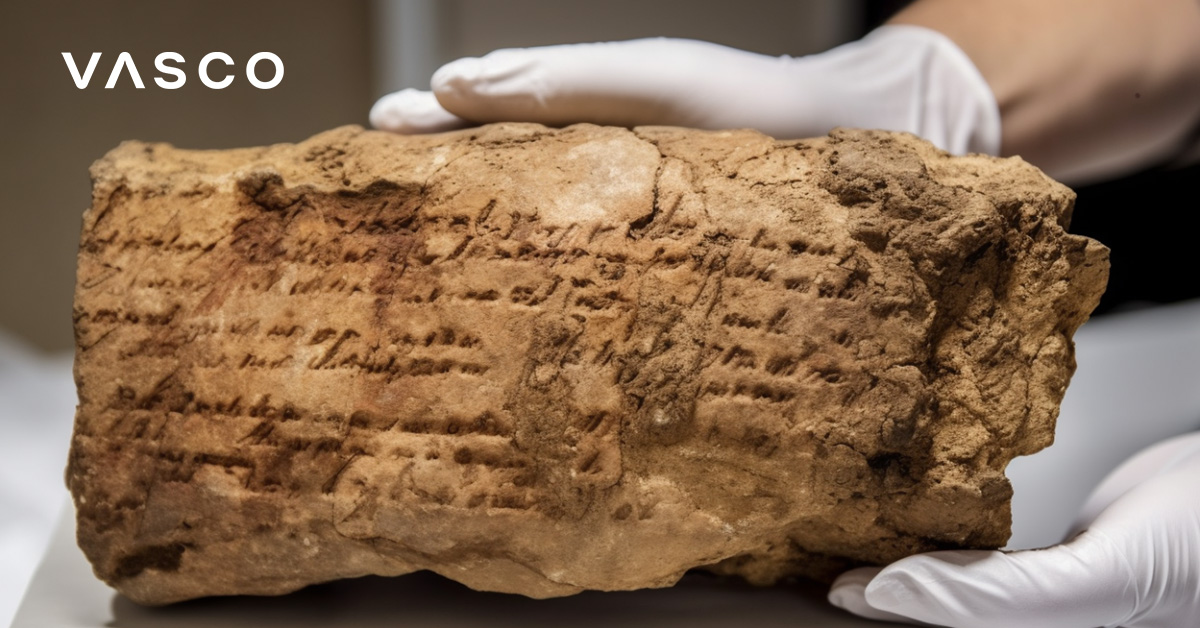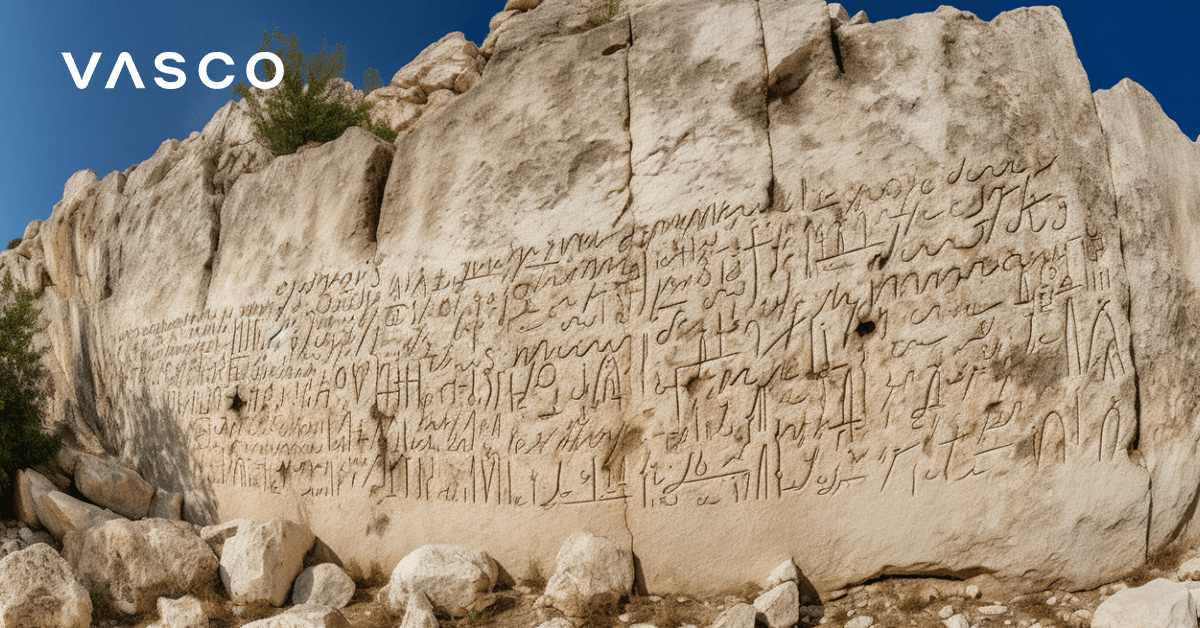Language is the bedrock of human interaction and civilization. It allows us to express our thoughts, emotions, and to share information.
However, have you ever wondered which is the oldest language in the world? Or the what is the oldest known spoken language in use today? These are questions that have intrigued linguists, historians, and anthropologists for years.
In this blog post, we will dive deep into:
- The concept of the oldest known language, touching upon the complexities in defining “oldest” in the context of languages.
- A look at the oldest spoken language in the world, the process of linguistic reconstruction, and the various candidates that vie for this title.
- An exploration of ancient written languages, with particular focus on the Sumerian language and the cuneiform script, Egyptian hieroglyphs, and ancient Chinese, among others.
- A discussion on Proto-Indo-European languages and their significance in the context of ancient language science.
- Case studies of the Sumerian language, ancient Egyptian hieroglyphs, and the origins of the first written language in the world.
- The impact of ancient languages on modern society, including the world’s oldest language still spoken today.
- An insight into the future of studying ancient written languages and the role technology plays in this domain.
So, whether you’re intrigued by the question “is Sanskrit the oldest language in the world?”, or you’re interested in knowing when did the first language appear, stay tuned.
The answers might surprise you as we embark on this journey to uncover the earliest language, the oldest surviving language in the world, and delve into a comprehensive list of ancient languages.
And if you love languages in general, but don’t necessarily like learning them, check out our voice translator. With it, you’ll have even 108 languages in your pocket. Contemporary ones, though!
Now, let’s dive in to today’s topic.
FAQ:
What was the first language in the world?
Is Sanskrit or Tamil older?
What is the oldest spoken language in the world?
What is the oldest language still spoken?
What is the oldest written language?

Table of Contents:
What Constitutes a Language
Language can be defined as a complex system of communication that uses symbols – either spoken, written, or signed – to express ideas, emotions, and states of being.
It follows specific rules of structure and syntax, enabling meaningful interaction among its speakers. In our exploration of the oldest known language, we will delve into both ancient spoken and written languages.

The Importance of Studying Ancient Languages
Studying ancient written languages like the Sumerian language or Egyptian hieroglyphs provides a window into the past. These languages, some of the earliest recorded in human history, are fundamental in understanding the societies that birthed them. Moreover, they are key to tracing the roots and evolution of modern languages.

The Complexities of Defining “Oldest”
When it comes to determining the oldest known language, we face several challenges. The concept of ‘old’ can be interpreted in various ways. Does it refer to the first ever spoken language? Or the earliest written records we’ve managed to decipher? Maybe we’re considering the earliest spoken language still in use today?
The Difference Between Spoken and Written Languages
A crucial distinction must be made between spoken and written languages. The former are thought to have emerged tens of thousands of years ago, while the latter have only been around for roughly 5,000 years. They gave us our initial concrete evidence of ancient written languages, yet they only represent a fraction of our linguistic heritage.
Determining the Age of a Language
So, how do we determine the age of a language? For written languages, we can often date their earliest surviving documents, thus answering the question of what was the first recorded langauge. However, for spoken languages, it’s far more complex. Linguists use a method called comparative linguistics, looking at languages we know are related, and tracing back words and sounds to find a common ancestor. The further back we can trace, the older the language.

Earliest Evidence of Spoken Languages in the world
The Challenges of Tracing a Spoken Language
Tracing the origins of spoken languages is an arduous task. Spoken languages leave no physical trace and can only be inferred indirectly. Hence, it’s virtually impossible to determine with absolute certainty what the oldest spoken language in the world was.
Linguistic Reconstruction
Linguistic reconstruction helps us peer back into the past. Through this method, linguists can trace elements of modern languages back to their roots, giving us a glimpse of languages that existed thousands of years ago. For example, we can reconstruct elements of Proto-Indo-European languages, which are believed to be among the oldest in the world.
Candidates for the Oldest Known Spoken Languages
Various candidates have been proposed for the title of the oldest known spoken language, including:
- Sumerian: One of the earliest languages for which we have written evidence, the ancient Sumerian language was spoken in Mesopotamia (modern-day Iraq) over 4,000 years ago.
- Egyptian: The language of the Pharaohs, ancient Egyptian was spoken for thousands of years and has provided us with a wealth of inscriptions and texts.
- Tamil: Some linguists propose that Tamil, still spoken today by millions of people in India and Sri Lanka, could be oldest spoken language in the world.
In the next section, we’ll dive into the fascinating world of ancient written languages. Buckle up for a journey through cuneiform script, Egyptian hieroglyphs, and other scripts that have shaped the course of human history.

Earliest Evidence of Written Languages
While spoken language likely dates back tens of thousands of years, the advent of writing is a much more recent development in the grand scheme of human history.
The first written language marked a significant milestone, providing a tangible way to record, communicate, and pass down knowledge across generations and geographies.
This innovation has left us with a record of the ancient languages that were used in various civilizations.
Deciphering Ancient Scripts
The process of deciphering ancient scripts is like piecing together a complex puzzle. The Rosetta Stone, for instance, was crucial in understanding Egyptian hieroglyphs because it presented the same text in two scripts: Greek, which could be read, and Egyptian hieroglyphs, which couldn’t.
Such breakthroughs have unlocked the secrets of ancient written languages, revealing valuable insights into our past.
Examination of the Oldest Known Written Languages
The journey into the past begins with some of the earliest written languages known to man, each with its unique scripts and systems.
Sumerian Language (Cuneiform Script):
Often considered the first written language, the Sumerian language was documented using cuneiform script on clay tablets. The script, which started as pictographs, evolved over time, enabling us to peek into the world of ancient Sumerians.
Egyptian Hieroglyphs:
Synonymous with the majestic civilization of ancient Egypt, hieroglyphs were used for formal writing, such as royal decrees and religious texts. The discovery and translation of these ancient Egyptian hieroglyphs have shed light on a civilization that thrived for millennia.
Ancient Chinese:
The oracle bone script, the oldest known form of Chinese writing, gives us an insight into the Shang Dynasty’s divination practices and the foundations of the Chinese language.
Other Ancient Languages:
There are also candidates for early written languages, such as the Indus script (still undeciphered), Linear B (an early form of Greek that has been evolving up to modern Greek), and ancient Sanskrit.
Case Studies of Ancient Languages

Ancient sumerian languages: A Peek into Ancient Mesopotamia
Sumerian, written in the distinctive wedge-shaped cuneiform script, is one of the earliest known written languages. Originating in Mesopotamia, present-day Southern Iraq, around 3200 BCE, it provides us with a fascinating glimpse into one of humanity’s earliest civilizations.
- Characteristics: Sumerian is a language isolate, meaning it does not belong to any known language family. Its structure is agglutinative, where words or morphemes are joined together to express complex ideas.
- Significance: The Sumerians used their language to document laws, trade transactions, and even literature, including the Epic of Gilgamesh, one of the oldest known works of literature.
- Decipherment: The decipherment of Sumerian began in the 19th century and was made possible through multilingual inscriptions, particularly those in Akkadian, a later language of Mesopotamia that also used the cuneiform script.

Egyptian Hieroglyphs: The Official Language of the Pharaohs
The ancient Egyptians used hieroglyphs for more than 3000 years, making it one of the longest surviving writing systems in human history.
- Characteristics: Egyptian hieroglyphs contain a mix of logographic, syllabic, and alphabetic elements. They were used primarily for monumental inscriptions and religious texts.
- Role in Society: Hieroglyphs were integral to the bureaucratic, religious, and intellectual life of ancient Egypt. They are found everywhere, from monumental structures to papyri containing literature and scientific texts.
- Decipherment: The Rosetta Stone, discovered in 1799, had the same text written in Greek language, as well as Demotic, and hieroglyphs, paving the way for the decipherment of ancient Egyptian hieroglyphs by Jean-François Champollion in 1822.

Ancient Chinese: The Seeds of Modern Chinese
Chinese is one of the oldest continuously used writing systems in the world, with the earliest forms traced back to the Shang Dynasty (c. 1250-1046 BCE).
- Development: Early Chinese script, known as oracle bone script, evolved over millennia into the complex system of characters used today.
- Usage: Oracle bone script was used mainly for divination purposes, with inscriptions made on turtle shells and animal bones. These inscriptions provide valuable insights into the culture, religion, and society of the Shang Dynasty.
- Continuing Influence: Ancient Chinese has a significant influence on the modern Chinese language. The structure and some characters have remained surprisingly consistent, making Chinese one of the world’s oldest languages still in active use.

The Impact and Influence of Ancient Languages on Modern Society
Ancient Languages: A Legacy in Modern Times
Ancient languages may seem to belong to a world long past, but their legacy continues to resonate in modern society. From influencing contemporary languages to contributing to our understanding of ancient civilizations, their impact is both profound and pervasive.
The Reach of Ancient Languages
- English and its Ancient Roots: Many English words have roots in ancient languages. For example, the word ‘mother,’ can be traced back to the Proto-Indo-European word ‘*méh₂tēr’. It’s also the most widely spoken language in the world today.
- The Influence of Sumerian: While Sumerian itself has no known living descendants, it influenced Akkadian and through it, other Semitic languages such as Arabic language and Hebrew language. Certain Sumerian words were also borrowed by other languages in the region. Still, today it is considered a dead language (part of extinct languages as opposed to a living language).
- The Legacy of Egyptian Hieroglyphs: The ancient Egyptian language influenced Coptic, which is still used as a liturgical language in the Coptic Orthodox Church. The decipherment of hieroglyphs also paved the way for a better understanding of Egyptian history and culture.
- Enduring Sanskrit: Sanskrit, one of the oldest Indo-European languages, has significantly influenced many modern languages in South Asia. It’s also the source of many terms used in yoga, meditation, and other spiritual practices, so it’s considered a sacred language.
- Chinese through the Ages: Chinese, as one of the oldest continuously used writing systems, has significantly shaped East Asian culture. Variations of Mandarin Chinese characters are also used in Japanese, Korean, and Vietnamese scripts.
The World’s Oldest Language Still Spoken Today
Out of the ancient languages, a few have survived and continue to be spoken in some form. For instance, modern Hebrew, despite having fallen out of daily use for many centuries, was successfully revived in the 19th and 20th centuries and is now the primary language of Israel.
Tamil language and Chinese also lay claim to being among the world’s oldest languages still spoken today. Tamil language, primarily spoken in South India and Sri Lanka, has a first written record dating back over two thousand years. Chinese, meanwhile, boasts a continuity of written records and sustained spoken use dating back to the Shang Dynasty.

Conclusion: Unraveling the Oldest Spoken Language in the world
Our exploration of the world’s oldest known languages offers us a rich tapestry of human history and culture. From Sumerian cuneiform script to Egyptian hieroglyphs, from the potential of Sanskrit being the oldest language in the world to the enduring legacy of Tamil language and Chinese, this journey has been an intriguing blend of facts, theories, and fascinating insights.
The challenge
The quest to identify the oldest recorded language in the world, is more than an academic pursuit. It’s a tribute to human innovation and our instinct to communicate and connect. It reveals how different civilizations have left their imprints on time and contributed to the linguistic diversity we see today.
The interesting case of old languages in the world
While the absolute answer to “What is the oldest language in the world?” might still be debated among linguists, our exploration highlights that languages are much more than mere systems of communication. They are windows into our past, shaping our present, and will undoubtedly play a vital role in our future.
As we continue to find answers, questions like “What is the oldest language known to man?” or “which language is the oldest?” remain a driving force for scholars and enthusiasts alike. The study and preservation of ancient languages continue to gain momentum in the digital era, powered by technology and a renewed interest in our linguistic heritage.
In the midst of this all, one fact remains clear: whether it’s the oldest spoken language in the world or the oldest language in the world still spoken today, each language holds a unique place in the annals of human history. Our collective linguistic journey, filled with myriad ancient languages, is a testament to our shared history and the fascinating evolution of human communication.
And remember, if you want to have the contemporary languages at your fingertips, be sure to check out our smart translator device. Talk with over 90% of world’s population, without language barriers! Vasco lets you translate audio, text from photos and much more. Be sure to check it out, and unlock new linguistic possibilities.
| Language | Approximate Age | Region | Current Status |
|---|---|---|---|
| Sumerian | 5000 years | Mesopotamia | Extinct |
| Egyptian | 4700 years | Egypt | Extinct (Coptic descendant) |
| Sanskrit | 4000 years | India | Limited use |
| Greek | 3400 years | Greece | Still in use |
| Chinese | 3400 years | China | Still in use |
In a nutshell:
In our exploration of the world’s oldest known languages, we dive deep into the realm of both spoken and written forms of communication. We start by outlining the challenges of tracing the first spoken language and discuss contenders such as Sumerian, Egyptian, Tamil, Chinese, and Sanskrit. The focus then shifts to written languages, where we explore the origins of Sumerian cuneiform, Egyptian hieroglyphs, and ancient Chinese script. Through case studies, we delve into these ancient languages’ characteristics, their decipherment, and their lasting influence on modern societies. The blog post concludes by highlighting the continued study and preservation of these languages in our digital era, emphasizing their integral role in human history and the fascinating evolution of human communication.











